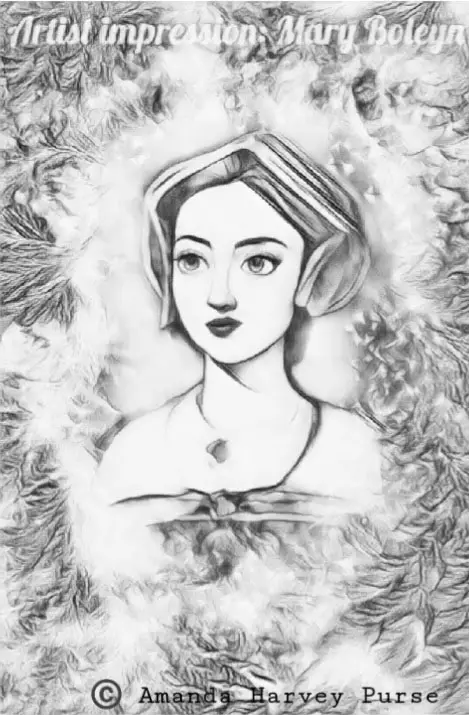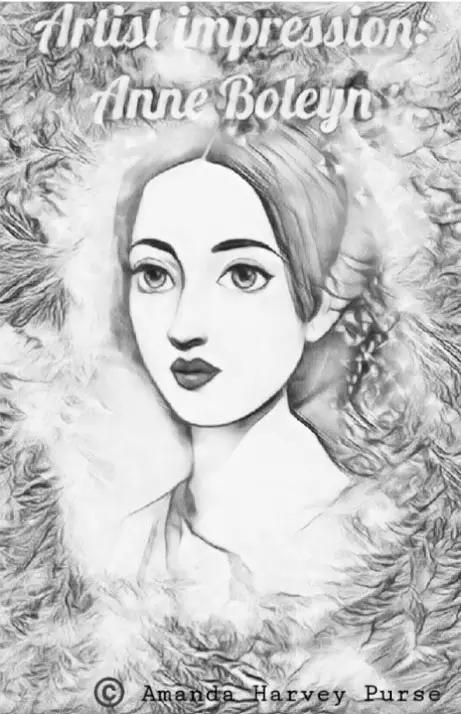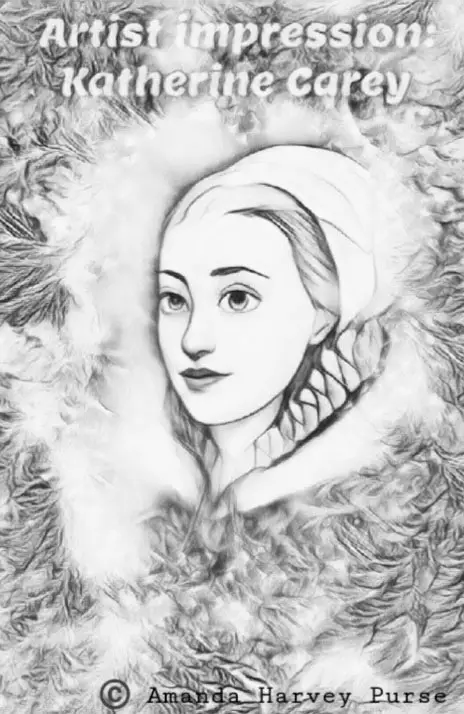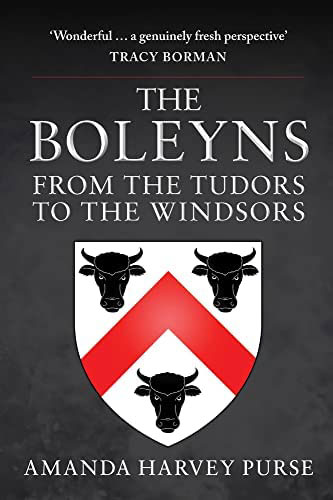December 9: The Differences between Anne and Mary Boleyn
Thank you to Amanda Harvey Purse for today's fascinating article about the sisters Boleyn. Amanda is a Fellow of the Royal Historical Society and has studied the Tudors era at the Universities of Roehampton and Glasgow. She has worked for many London based museums and has wrote for History Hit, The Charles Dickens Society, Anne Boleyn Files, Historic Houses, The Whitechapel Society Journal and many more.
A Mother's Bond
When we think of a mother’s bond within the Tudor Boleyn family, it would be quite natural for us to think of the mother-and-daughter relationship of Anne Boleyn and her daughter Elizabeth. It is a relationship of ultimate sadness of a young, almost three-year-old girl, losing her mother on trumped-up charges of adultery, incest and perhaps only because of the paranoid Tudor dynasty, charges of treason. This led to a sorrowful circumstance where Elizabeth’s father, King Henry VIII, ordered the death of her mother. However, because of that, this relationship had some importance to the future ‘golden age’ that was to come. With both Anne Boleyn and Elizabeth being Tudor queens too brings a sense of specialty to us through this mother and daughter bond, so it’s very understandable to think of these two powerful women of the Early Modern period.
However, the wonders of the Boleyn family cannot be attributed to just one famous member and her child. In fact, there was another mother and daughter bond that has an importance, even to us today. It may not have the glamour of having two Tudor queens within it but the characters of these women, the strong-willed intelligence that was often lying just underneath the surface of this mother-and-daughter relationship, ricochet down the centuries, often allowing us to see the formidable nature of the Boleyn family survive past the reign of Queen Elizabeth I, to other historical characters such as the royal courtiers, a famous architect, a Treasurer of the Royal Household to reach quite another Queen Elizabeth entirely and the modern-day Royal family.
This mother-and-daughter bond starts with Anne Boleyn’s sister, Mary and her daughter Katherine Carey. To perhaps understand the strength of this relationship and how its characteristics managed to carry on into future descendants, we have to discover the strength that laid within its matriarch, Mary Boleyn. Not only will we be giving Mary a chance to shine underneath her more well-known family members but this will also give us a chance to examine the differences between the sisters Boleyn too.
Mary's Strength of Character

A good example of showing us the strength of Mary Boleyn is in a particular moment within her life. The date was 22 June 1528 and with the death of her first husband, William Carey, Mary’s life was turned upside down. Her husband’s death left Mary poor as all the lands were then given to her son. It seemed her father had distanced himself from her, only giving her a place to stay on the insistence of the king. Her son was given into the care of her sister and she still had another child to try to bring up on her own.
We could suggest that because Mary had fell out of favour and was in debt, Mary within the Tudor period, was considered a very poor woman indeed. It could be suggested that a Boleyn had fallen far and sadly Mary did it very fast.
However, if we look at this moment in another way, overall ‘a Boleyn’ Mary still was and it is very interesting to note that Mary does not crumble and fall by the wayside, although it may seem at first that she didn’t fight back because she does not react how her other family members may have done. This is our first suggestion that the sisters Boleyn may seem similar in certain ways, there were also differences too. If we look past the common notion of Mary being the weak link of the Boleyn family, in this age when we can look at historical characters in a different way to what we had done before, we may just find Mary Boleyn of a different ilk altogether.
The Diferences between Anne and Mary Boleyn

We can suggest that one of the largest differences between Anne and Mary Boleyn was how they dealt with setbacks. Anne was a force of nature, knew what she wanted and had the confidence and knowledge to attack a setback, face on, to get her own way. She managed to become queen when there already was one and she had a role in changing the country’s religion, a subject matter that had strong opposition.
Place Anne in Mary’s stead then, at this moment within Mary’s life, when she had lost so much and what would Anne have done?
It is a difficult question to answer as we don’t have hindsight on our side, but is there a possibility Anne would have instantly fought back? Would she have found some way to instantly make her voice heard? What would the outcome have been? She may have got her own way but at what cost? How many people might she have annoyed by the ‘manner’ of which she had got her way?
With this in mind, it is interesting to look at Mary’s actions because she did fight but not in the same way as her sister. Anne could be suggested as coming at a problem like a wrecking ball, Mary on the other hand could be suggested as chipping away at a problem, like a finely skilled stone mason, for the same outcome but without the enemies in tow. Mary ultimately gets what she wants with her finances and her family home of Rochford Hall, but it is at this moment Mary also does something rather powerful too. She uses this ‘fall from grace’, to be a mother to her daughter.

It's possible in the first years of Katherine’s life she spent it with her mother’s full attention at Hever Castle. We can only imagine how strong this moment made their bond as this strong bond, this strong nature to get what they require while surviving, could be said when looking at future events, to run from mother down to daughter, to granddaughter. For it to ultimately run from the Boleyns to the Windsors…

Amanda Harvey Purse has recently published The Boleyns: From the Tudors to the Windsors, her first book surrounding the era of the Tudors, her childhood love. The book takes a unique view of the Boleyns family narrative of which Queen Consort Anne Boleyn was a member of with new research. She is currently working on three new books about interesting characters within Britain history, two set majorly within the Victorian period and one set within the Medieval and Tudor eras.